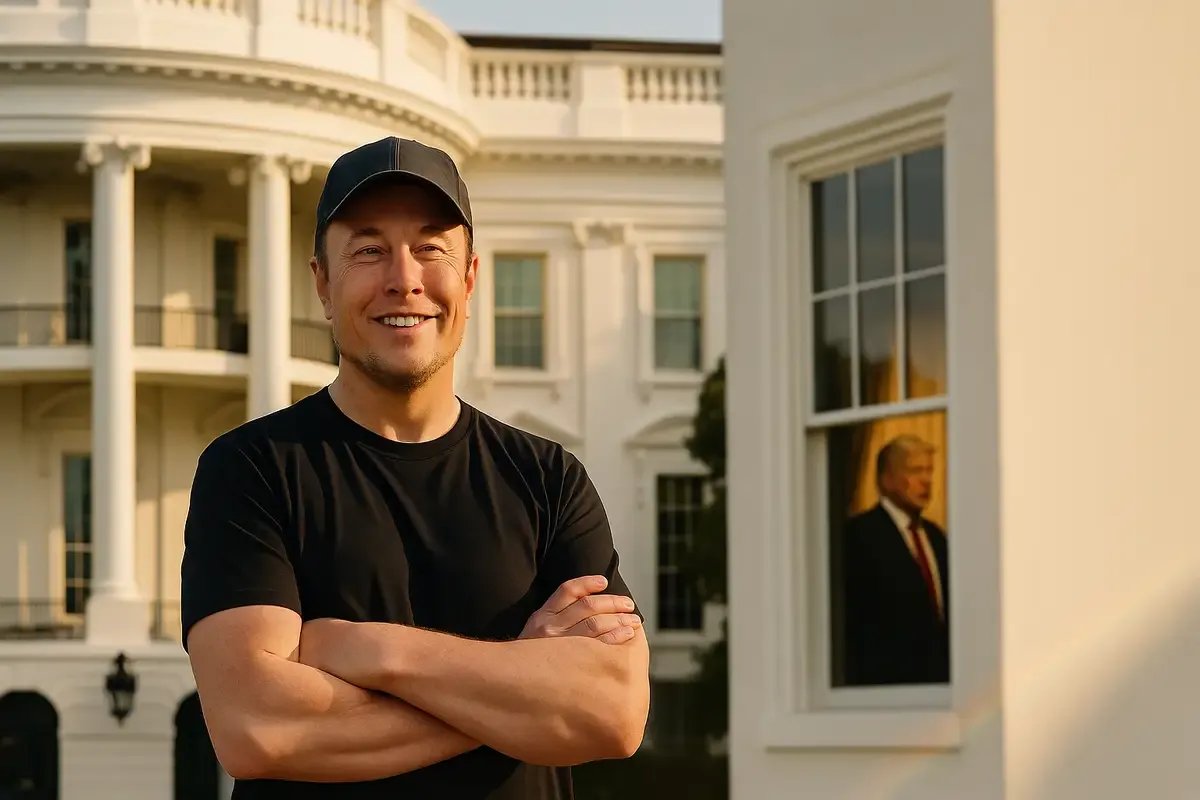Werner Walks Out. The Hackers Never Left.
Good Morning from San Francisco, Werner Vogels printed sixty thousand newspapers and walked off the Re:Invent stage for the
Marc Andreessen says Elon Musk's management playbook produces impossible results—but he can count on one hand the founders who could execute even 10% of it. As AI hardware startups raise hundreds of millions, that gap matters more than ever.

💡 TL;DR - The 30 Seconds Version
🎯 Marc Andreessen says Elon Musk's management system is radically understudied—talk only to engineers, fix one bottleneck weekly, conduct engineering reviews where you fire weak performers on the spot, and build a cult of personality instead of spending on marketing.
⚠️ The method assumes you can hold every engineering topic in your head simultaneously and qualify to redesign database architecture with a 23-year-old at 2am—Andreessen can count on one hand the founders capable of executing even 10% of it.
🏗️ AI hardware startups raising hundreds of millions face the same trap as past hardware founders: fall in love with the product, treat commercialization as beneath the science, and burn capital for years before shipping.
📊 The AI infrastructure build resembles the 1999-2000 telecom bubble—capital floods into data centers because 50-year-olds know how to build those, not into transformer architectures where the new skill set lives.
🚫 The method stays understudied because Musk generates emotional responses that prevent analysis—founders who should be learning from him can't bring themselves to study the system, to their own detriment.
🎲 Silicon Valley's frontier culture enabled Musk but also countless founders who lacked systematic thinking—the challenge for AI hardware is identifying which wilderness engineers can actually institution-build.
Marc Andreessen thinks Elon Musk's management playbook is radically understudied. In a recent conversation with Stripe's John Collison and investor Charlie Songhurst, the a16z cofounder walked through what he calls "the Elon method"—a system that violates every management principle taught at business schools and produces companies that routinely achieve what experts declare impossible. The twist: Andreessen can count on one hand the number of founders he's met who could execute even a fraction of it.

That gap matters more now than it did five years ago. AI hardware startups are raising hundreds of millions to build data centers, robotics systems, and compute infrastructure—capital-intensive bets that historically end in spectacular flame-outs. The standard hardware playbook encourages indulgence: spend years on R&D, fall in love with the product, treat commercialization as beneath the science. Musk's approach inverts every assumption. And most founders, Andreessen suggests, are temperamentally incapable of adopting it.
The system has clear components.
👉 First: only engineers matter. Your job as CEO is to talk exclusively to line engineers, ruthlessly violating chain of command. Mid-level management exists for vacation policies, not truth.
👉 Second: every week, identify the single biggest bottleneck to company progress. Parachute into that problem. Stay up all night with the engineers solving it until it's fixed.
👉 Third: conduct engineering reviews—not product reviews—where every engineer presents their work for five minutes. The goal is omniscience: you know exactly what each person is building. Fire the weak performers on the spot. Go all out to retain the exceptional ones.
👉 Fourth: the legal department's purpose is to file lawsuits and establish deterrence. You're declaring war on anyone who challenges you.
👉 Fifth: build a cult of personality both inside and outside the company. No marketing budget. No investor relations. The show is everything—the products, the personality, the spectacle.
Collison added three refinements from studying Tesla and SpaceX. Pick the right metric and optimize ruthlessly for it: dollars per kilogram to orbit, deliveries per week rolling off the production line. These aren't obvious choices—you could track revenue, profitability, annual deliveries. The weekly cadence itself creates urgency. Second, create that urgency by shortening time horizons. Musk sleeping on the factory floor while Tesla was a $200 billion company sent a signal: we're solving Model 3 production now, not next quarter. Third, maintain brutal capital efficiency. Build the bad version, then the good version. Buy the commercial tunnel boring machine before developing your own. Take DOD money. The boring company and SpaceX both stayed lean despite massive technical ambitions.
Andreessen poses the question directly: if Elon operates at 1,000 milli-Elons, can a normal founder function at 100? At 10? His tentative answer is no—or at least, he hasn't met many who can. The method assumes you can hold the entirety of every engineering topic in your head simultaneously. When you're redesigning the database architecture with a 23-year-old engineer at 2am, you're actually qualified to do it. Not just once, but every time, across every domain.

That's the filter. Observers who dislike Musk's style often suggest he'd be "so much better" at 800 milli-Elons—keep the good parts, drop the abrasive edges. Andreessen's seen this feedback loop a thousand times with both Musk and Steve Jobs. The people receiving it have heard the advice, considered it, rejected it. For them, there's no reduced version. The system is integral. Partial adoption may be worse than not adopting at all, because the person capable of executing the 300 milli-Elon version doesn't exist.
Songhurst raised the Silicon Valley precedent: the wilderness engineers who don't have the conscientiousness to institution-build. Gary Kildall, who built CP/M—the standard PC operating system before MS-DOS—skipped his IBM meeting to go flying. His wife, the company lawyer, wouldn't sign IBM's NDA. Bill Gates bought Q-DOS for $50,000 from a developer down the street, licensed it to IBM, and created Microsoft. The frontier spirit that enables breakthrough technical work doesn't automatically produce the discipline to scale it.
Hardware founders consistently make two mistakes. They fall in love with the product and start viewing commercialization as beneath them—an unpleasant distraction from the real work of building beautiful technology. They also persuade themselves that venture capital gives them five to ten years to explore before shipping product. The science project extends indefinitely.
Andreessen and Songhurst both flagged robotics as the current danger zone. Huge capital raises, long development timelines, technical founders who redefine their identity as producers of science rather than businesses. The Elon method directly confronts this pathology. You're capital-efficient because you can't afford not to be. You're shipping fast because survival depends on it. You're talking to engineers because that's where ground truth lives.
The AI infrastructure build-out looks increasingly like the telecom bubble of 1999-2000. Back then, software and services entrepreneurs were too few—only a handful understood how to apply the internet. So capital flooded into what it knew: putting buildings in the ground, filling them with fiber. Older telecom executives with access to debt markets built tremendously valuable infrastructure that sat empty for 15 years. The people who own that fiber today do very well. The original builders went bankrupt.
AI researchers may stay underpaid while GPU supply outpaces researcher supply. Songhurst's phrasing: "It would be ironic if AI researchers are still underpaid, but there are too many GPUs per AI researcher." The capital knows how to build data centers. It doesn't know how to build the next transformer architecture. So the bubble centers where the 50-year-olds with capital access operate, not where the new skill set concentrates.
Silicon Valley's high-trust culture emerged from brutal selection pressure. Anyone in the Valley long enough has scar tissue from the kid in the t-shirt with the crazy idea who turned out to be Mark Zuckerberg. The category-two error—passing on the company that succeeds—tortures you for decades. You read about it constantly. The pain never ends. So investors stay radically open to possibility, even when—especially when—the founder seems like a wilderness person.
That openness enabled Musk. It also enabled countless founders who lacked his systematic thinking. The distinction matters for AI hardware: the field needs the frontier spirit to attempt the impossible, but it needs the institution-building discipline to actually ship. Most founders embody one or the other. The method requires both, held in tension, executed simultaneously.
Andreessen's observation about why the method stays understudied cuts through: Musk generates emotional responses that prevent analysis. First he was politically neutral, then libertarian-coded, then fully polarizing. People who should be learning from him can't bring themselves to study the system. To their own detriment, he adds. The alternative isn't adopting every element wholesale—it's understanding which structural principles transfer and which require the full 1,000 milli-Elons to function.
• AI hardware's capital intensity makes the Elon method more relevant, not less—the companies that can't maintain discipline and capital efficiency will burn hundreds of millions building infrastructure that sits idle while the software catches up
• Silicon Valley's competitive advantage in AI traces directly to its frontier culture and high-trust ecosystem, but those same forces enabled founders who couldn't institution-build—the challenge for this wave is identifying which wilderness engineers have the systematic thinking to scale
Q: What happened to Gary Kildall after he missed the IBM meeting?
A: Bill Gates bought Q-DOS from developer Tim Patterson for $50,000, licensed it to IBM as MS-DOS, and built Microsoft. Digital Research survived but never recovered from losing the IBM deal. Thirty years later, Kildall was killed in a bar fight. His company had the standard PC operating system but lost everything because he went flying instead of meeting with IBM's lawyers.
Q: Has anyone besides Elon successfully used this method?
A: Steve Jobs ran Apple similarly—deep engineering reviews, ruthless about talent, cult of personality over marketing spend. People who worked for both Jobs and Musk report doing the best work of their lives despite difficult interactions. The common thread: they demand truth-seeking at all costs and maintain complete technical fluency across every domain, which is extremely rare.
Q: What does "capital efficient" mean for hardware startups?
A: Build the minimum viable version first, then iterate. Tesla started with a low-volume Roadster before mass-market cars. SpaceX took DOD contracts and sold launches while developing technology. The Boring Company bought a commercial tunnel boring machine before designing custom ones. Most hardware founders burn hundreds of millions on R&D before shipping anything—Musk's companies ship fast and fund development through revenue.
Q: Why does talking only to engineers bypass management?
A: Mid-level managers filter bad news and add interpretation. Line engineers know ground truth—exactly what's broken, what's blocked, what's impossible with current resources. Musk and Jobs ruthlessly violated chain of command to get unfiltered reality. Traditional management theory says this creates chaos. Their companies suggest it creates clarity when the CEO is technically qualified to process raw engineering data.
Q: What's the 1999 telecom bubble comparison about?
A: In 1999-2000, capital flooded into laying fiber and building data centers because older executives understood physical infrastructure but not internet software. Companies like Global Crossing built valuable networks that sat empty for 15 years while the original builders went bankrupt. The infrastructure owners today do well—the pioneers died. AI risks repeating this: data centers get funded because 50-year-olds understand construction, not transformer architectures.
Get the 5-minute Silicon Valley AI briefing, every weekday morning — free.